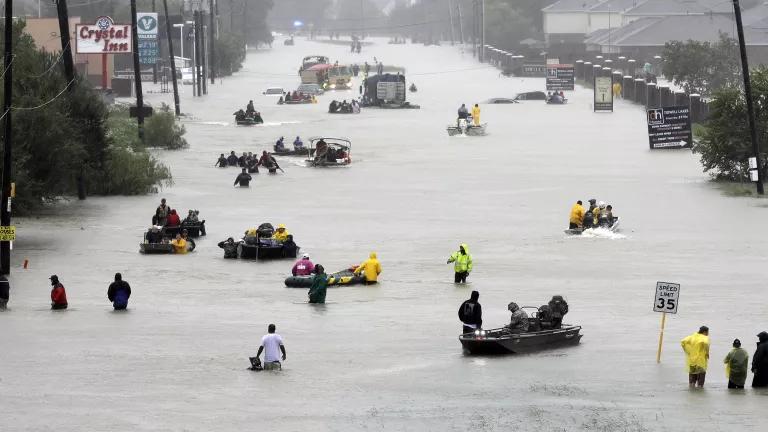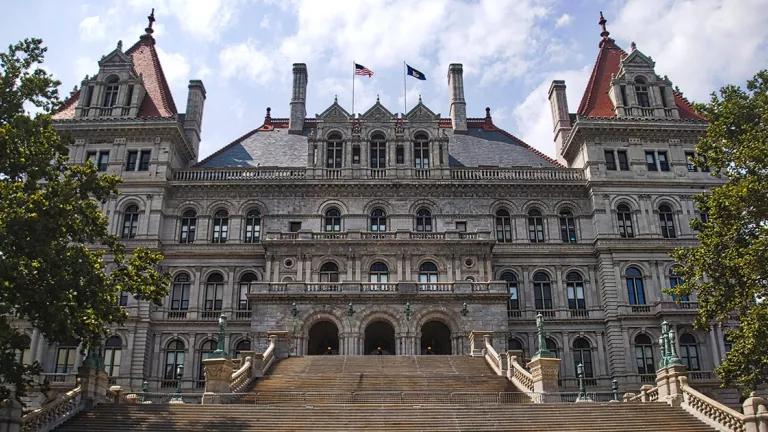A Thankful Feast, Not a Wasteful One

With the pile of Halloween candy behind us and the pumpkin spice invasion across store shelves, many of us are gearing up for the year-end focus on plenty. But this year, I challenge you to think about the upcoming holiday feasts in terms of “enough” rather than “abundance.”
Thanksgiving is a time to be grateful, yet it’s often very wasteful as well. Each year, about 200 million pounds of turkey meat are thrown out over the Thanksgiving holiday week. Just think of all the resources that went into that tossed turkey—enough water to supply New York City for 100 days, and a carbon footprint equal to that of 800,000 cars driving from Los Angeles to Florida. Not to mention the nutritional value of all that turkey. It is quite the contradiction that we celebrate a time in history when there was barely enough food to make it through the winter by over-indulging in a feast—much of which ends up in the trash. But holidays don’t have to be wasteful.
The absolute best way to stop food waste is to keep it from happening in the first place. It takes a little bit of attention but preventing food waste is not rocket science. Here are a few holiday tips:
- Make a plan: You know your dishes, but do you know everything that needs to go into them? Food waste warriors shop with a list. Make sure you have all the ingredients to make grandma’s famous rolls successfully so they all get gobbled up. Your plan should cover the extended guestlist too—help your guests coordinate the side dishes so you don’t have four kinds of green bean casserole (unless that’s part of your plan, in which case, scale the size of those casseroles for the number of people you’re expecting; more on portions below)!
- Start early: Don’t wait until the week of Thanksgiving to change your food purchasing habits. Start working your way through your existing food stash now to make room in the fridge and freezer. You’ll be grateful for the space when you’re looking for a place to slide in that pie. And if you’re heading out of town, eat up those items in the fridge before you leave for the holiday, so you don’t come back to a stinky mess.
- Portion it out: Even if there are five kinds of pie, your guests will (or at least should) only have one or two servings. The same goes for the sides, folks will eat fewer or smaller amounts of each the more you have. To take some of the guess work out of this process, our Save the Food campaign created The Guest-imator, a digital portion planning tool. The Guest-imator calculates the amount of each food to prepare, taking into consideration the number of portions needed and the number of dishes offered. Make sure this intel feeds back into your plan!
- Anticipate leftovers: For many of us, the capstone of Thanksgiving is leftovers. Make sure you have the other ingredients on-hand to make your favorite follow-up meal—whether it’s bread for leftover sandwiches, sufficient day-2 potatoes for all that gravy, or tortillas and sauce for turkey enchiladas. Think through how you’re going to use up whatever is left.
- Salvage a kitchen crisis: Burned the stuffing? Over-salted the gravy? Potatoes too bland? There’s a fix for that so you don’t have to toss it!
- Use your freezer: The freezer is a magic pause button for food—and almost anything can be frozen. If you don’t eat it within a couple days after the feast, freeze it, label it, and you’ll be excited to have a pre-made option in a couple weeks when you need it!
- Think outside the box: In this holiday of traditions, it is often taboo to try something new. But if no one ever eats that one dish, do you still need to make it just for the sake of tradition? In my house, last year we had a turkey quarter instead of a whole bird because we had a small gathering – don’t worry, we had enough and everyone survived.
Though Thanksgiving is likely one of our most wasteful times of the year, wasted food is a problem we need to solve all year round. In the U.S., up to 40 percent of our food goes uneaten each year, at an annual cost of $218 billion all told. Think of all the other things we could be spending that money on. Wasted food also includes massive amounts of wasted cropland and water, unsustainable landfill use, climate pollution and other environmental damage.
At the same time, one in eight Americans—more than 40 million people—don’t have a reliable supply of food at some point in the year. An NRDC report has outlined ways for cities to boost surplus food donations from businesses like grocery stores and restaurants to aid in emergency food assistance. In addition to doing our part to reduce waste in our homes, why not also celebrate the holiday this year by asking local leaders to enable more surplus food to go to our community members in need?
Happy Thanksgiving, all! For more tips all year round, check out @SaveTheFood.




